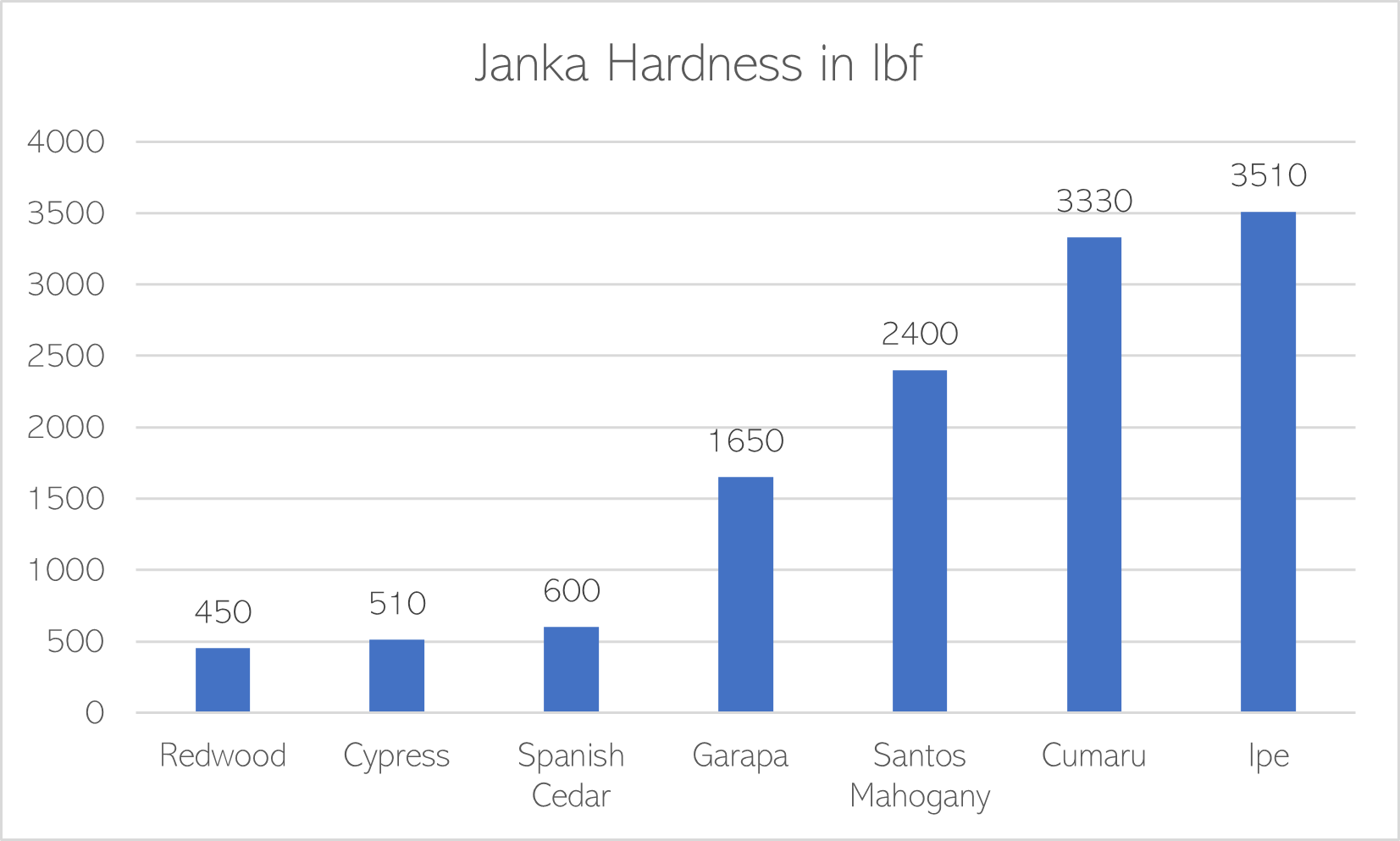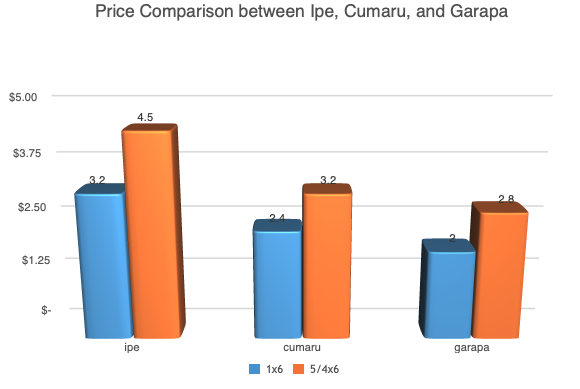
22 Feb Garapa: The Budget-Friendly Way to Upgrade your Deck
Garapa Wood: The Economical Way to Upgrade your Deck
Adding a deck is a great way to increase your living space, but picking the right material can significantly increase your home’s resale value. Traditionally, decks are made from pressure-treated wood because it is readily available and the least expensive deck building material.
The problem is that pressure-treated wood decks do not last very long, as the wood degenerates, cracks, splinters, and warps after only a few years. As an alternative, people use hardwoods or composite decking, but both these options raise the price of a deck significantly. However, there is a little-known, budget-friendly hardwood option that will save you a lot of money while giving you all the longevity of a hardwood: GARAPA.
Garapa Wood, which is also known as Brazilian Ash (Apuleia Leiocarpa) is greatly praised for its density and durability. It is a much harder wood option than any domestic wood such as California redwood or cedar. In order to have an accurate idea of how garapa compares to other hardwoods and domestic softwoods, it is best to use the janka scale.
The Janka scale shows how resistant a wood is by measuring how much force is required to dent the wood using a 0.44 inch steel ball. If it takes a lot of force to dent the wood, it is considered strong. The strongest hardwoods are ipe and cumaru which require 3,501 and 3,330 pound per force each.
Compare this to your domestic woods such as redwood and cypress which require only 450 and 510 lbf each, and you see just how stark the difference is between hardwoods and softwoods. Garapa is nicely in the middle, having a Janka hardness of 1,650 lbf (7,350 N). See the graph below to get a visual idea of just how strong garapa is compared to other woods.

Since garapa wood is not as strong as ipe and cumaru, its price point is a little lower. So how much cheaper is Garapa decking compared to other hardwoods? Let’s compare some prices (as of 2021) to give you a better idea:
A common decking dimension used for deck building is a 1×6 board. A 1×6 board of ipe costs $3.20 per linear foot and a 5/4×6 board costs $4.50 per linear foot. In cumaru the costs goes down slightly to 1×6 being $2.40/LF and 5/4×6 at $3.19/LF. With Garapa retailing at around $1.95/LF for the 1×6 dimension and $2.80/LF for the 5/4×6, you can imagine the savings! Garapa is approximately 38% cheaper than ipe and 15% cheaper than cumaru.

If you’re building a new deck, it’s likely that your most pressing question is “how much does it cost to build a deck?” While there are no easy answers to the question, there are still a few variables you can solve. Although the costs for labor and installation can vary from contractor to contractor, you can get a rough estimate for the number of materials you’ll need to build your new deck.
So how much does a garapa deck cost?
There are several costs associated with building a deck, but one of the biggest is the cost of the decking materials. Other factors that will impact the cost of your deck are the size (square footage), how much detail is in the design, how tall your structure is, what you are building over (grass, concrete, a previously built structure), and of course labor.
Let’s calculate how much garapa you would need for an average size, square deck to give you an idea. A 10’ x 10’ deck would equal 100 square feet. If built using a 1×6 sized board, ordered in random lengths, and the cost per linear foot was $1.95:
For instance, let’s look at what the costs of garapa for a 10’ x 10’ deck might be:
- First, we figure out our area. The area is length times with (a = l x w). So 10’x10’ means our area is 100 square feet.
- Next, we have to take into account the dimension of our board. Board widths are given in inches and are area is in feet, so we need to convert from inches to feet. So, since 1 foot = 12 inches. The nominal size of the board is 1×6 but the real dimension of the garapa board is ¾″ x 5 ½″ so we divide 12/5.5
- Length = 100 x (12/5.5)
- So, in our example, the length would be 218 feet. So, if the price of a 1×6 garapa, is at $1.95 per linear foot would come out to $425 in garapa.
In addition to the cost of the garapa wood you will need to add the structure underneath the deck (usually pressure-treated wood beams, sometimes lined with rain screen, the braces and brackets, and all the hardware and oils or sealers, plus the cost of labor. Since those prices are going to probably be the same if you use ipe instead of garapa, let’s see how much the same amount of ipe would cost.
Back to our 100 square foot deck, using a 1×6 ipe at a cost of $3.20/LF the total cost would be 218 linear feet x $3.20 = $697.60. Given that garapa is comparable to ipe in many respects, it is an obvious choice for anyone wanting to save a buck.
Price is a good reason to choose garapa, but there are plenty of others! It has a beautiful golden color, and it is rot, decay, and insect resistant. It is easy to take care of, only needing to be oiled about once a year. It is a toxin-free product which means it will not have a harmful impact on your health or on the environment.
If you would like to know more about garapa wood, please contact us for a quote, a sample, and installation advice. We can ship garapa to any part of the US, Canada, and the Caribbean.
To learn more about the products we offer, please contact us, email [email protected] or give us a call at
(877) 535-0926.
